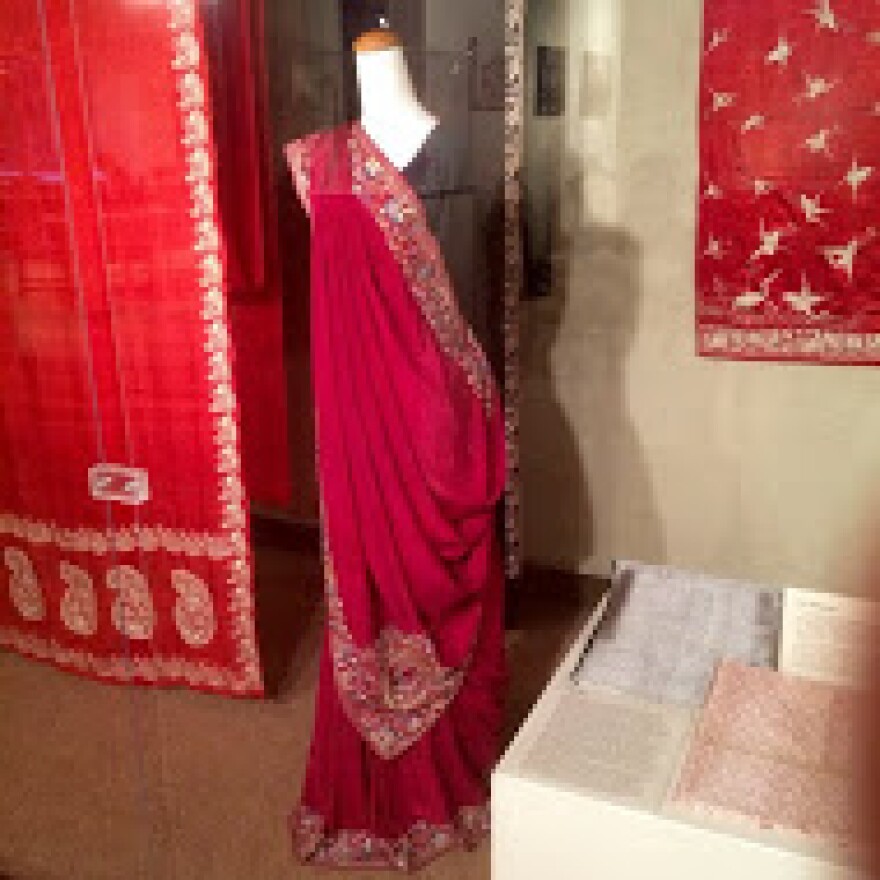
Mass migrations are in the news today, but populations have been relocating all through human history. When Muslims invaded Iran over 1200 years ago, most followers of the Zoroastrian religion relocated to India. An immigrant community, they learned Hindi and English, and soon, Cantonese, providing a vital trade link between China, India and the West. HPR’sNoeTanigawa reports on a textile show at the East West Center that illustrates their success.
The sari wearing ceremony is a rite of passage into womanhood for Parsi women---that is, women of the Zoroastrian religion. Known as a gara, the Parsi sari is draped with the left ear showing, and Parsi women would wear just one "chandelier" earring. The garas has been prized since the 19th century for their stunning embroidery.
Firoza Punthakey Mistree and Pheroza Godrej are curators of this exhibit of Parsi silk and muslin at the East West center gallery.

Godrej says Chinese merchants persuaded embroiderers to use special techniques for their Parsi customers who used up to 9 yards of intricately embroidered border pieces to set off the edges of their gara.
Fine textiles were not all they traded. Some see Parsi involvement in the opium trade as crucial to the development of the British colonial, Imperial, then, Indian economies.
Learning English pivoted the Parsi’s into position with the British East India Company and later with the Crown. Opium manufactured in India was sold in China and ships returned with tea and fabrics.
Michael Schuster, curator for the EWC Gallery, says the 19th -early 20th century saw a flowering of Parsi business and culture, when British and Parsi businessmen together built the city of Mumbai.
But there’s a twist with Parsi business. Tata for example, the Parsi company that owns Tetly Tea and Jaguar Land Rover is proud to be 66% owned by charities. Wealthy Parsi philanthropists have a reputation for funding educational, scientific, health, and cultural causes-- the Indian Institute of Science, the Tata Memorial Hospital, the National Centre for Performing Arts, and more.
The Parsi constitute one ethnic minority that few are complaining about. In fact, this year, the Indian government allotted 100 million rupees to help grow its Parsi population, including by in vitro fertilization. The pieces in the EWC show are each about 200 years old—but young women wear striking contemporary garas today for special occasions. These days, mostly made in India. Traditional garas came in shades of magenta, royal blue, turquoise and red. Young Parsis today are said to prefer bold, black garas with colored blouses.

“Parsi Silk and Muslin from Iran, India and China”, a small sampling of diverse pieces of clothing, continues at the East West Center Gallery through January 24th. This Sunday, see an illustrated talk about “Chinese Influence on the Fashion Runway” in the gallery. Find more images and peruse the East West Center Gallery brochure.





